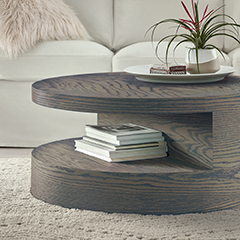With a greater variety of products come changes in application, tools and drying times, so first take a moment to read the instructions–and always play it safe: Wear protective gloves and safety glasses, and provide plenty of fresh air.
HOW-TO
Top Ten Tips
Particleboard absorbs too much stain, veneers sometimes not enough; "paint grade" woods are lower quality than "stain grade" woods and while a stain can change the color of a board, it can't change the grain pattern. In short, ask questions and learn what to expect from any wood you buy.
Sanding isn't always fun, but scratches and nicks absorb more stain and finish than does smooth wood, hence they stand out more, not less, when stained.
Wood pores are irregular and only Minwax® Pre-Stain Wood Conditioner can reduce the likelihood of blotchiness when these irregular pores absorb the stain you apply.
Wood is unpredictable, so test your stain color on an inconspicuous spot before you start staining the most visible parts of your project.
Some ingredients in both stains and finishes settle over time, but shaking will only add unwanted bubbles—and may not mix the ingredients thoroughly. Always stir until all settlement is evenly dispersed.
Foam brushes are fine for applying Minwax® Pre-Stain Wood Conditioner and any Minwax® stains, but they don't lay down a smooth final topcoat finish as quality bristle brushes do.
For best results, face the strongest light in your work area so that you'll immediately spot any runs, drips or missed areas while you are staining and finishing. And be sure to work in a well-ventilated room.
Before recoating an existing finish, make sure the old finish has been cleaned of any oils and wax, is completely dry, and has been scuffed lightly with fine 220-grit sandpaper so that the new finish has something to grip.
Dust is the enemy of a smooth finish. To eliminate dust, vacuum it off your project and workbench rather than brushing or blowing it into the air. Also, be sure to use a damp cloth as a final cleanup on the wood before staining or top coating.

